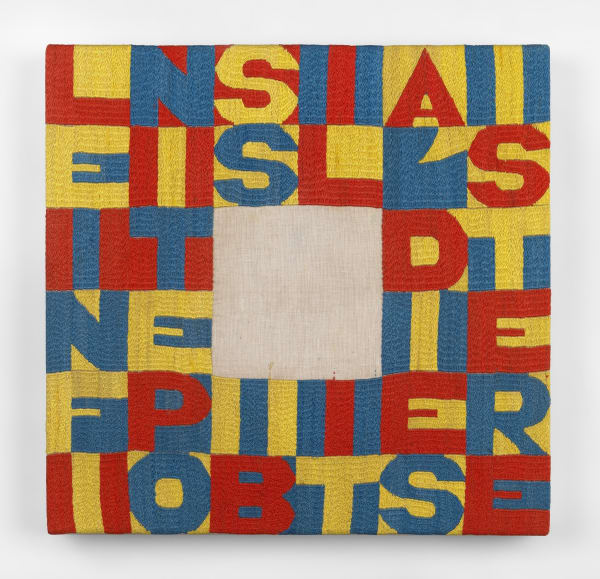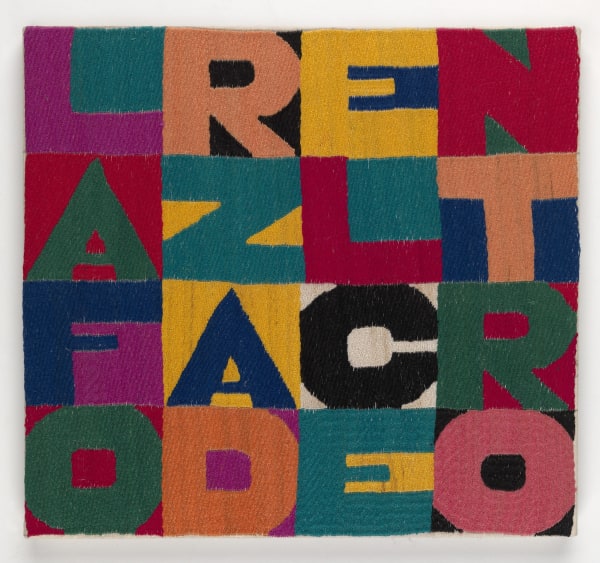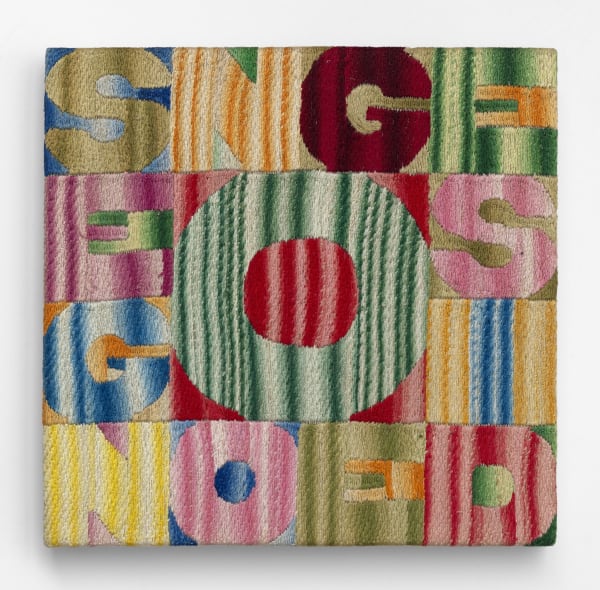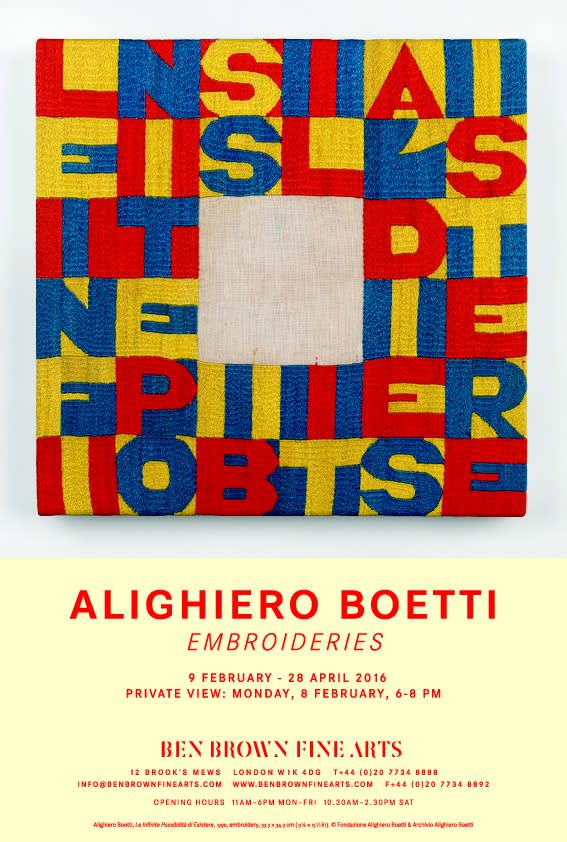ALIGHIERO BOETTI: Embroideries
Ben Brown Fine Arts is thrilled to announce their first solo exhibition of embroideries by Alighiero Boetti, one of the most important and influential Italian artists of the twentieth century. The exhibition will present an extensive survey of Boetti's arazzi (meaning embroideries), from monochromatic to multi-coloured, pre-1979 to more recent and of different formats and sizes. Among the works are a rare group of arazzi from the 1970s. Notably Millenovecentosettantotto, 1978; Le Nuove Autonomie, 1979; Sciogliersi come Neve al Sole, 1979 and I Verbi Riflessivi, 1979.
Alighiero Boetti was born in Turin in 1940. His first works which were created in the 1960s were more object oriented and fitted well within the realms of Arte Povera. However, his work became progressively more similar to that of conceptual artists such as On Kawara (time) and Lawrence Wiener (language). Boetti used simple and often industrial materials, concentrating more on the creative conception of the work and leaving its execution to others - in case of the embroideries to Afghani women. This also enabled Boetti to integrate Eastern culture and its tradition in his works (often represented by Farsi writing) since he was very much interested in the principle of polar forces and harmonies and hence, bridging West and East.
Mappa (Alighiero Boetti a Kabul Nuova Republica Democratica d'Afghanistan - Alighiero Nel Millenovecentosettantotto Nove Diece), 1978
The Mappa, amongsthis most important works within the embroideries, were first executed in 1971. The embroidered maps of the world usually have a monochrome background from which the coloured continents and countries appear. At the time of the design of the Mappa Boetti chronicled the then current geo-political situation of the world. However, because of the lengthy process of embroidering a Mappa (up to two years), each individual work would gain a character of transition because the world had changed since its original design and hence the Mappa would lose pictorial value as a true representation of the current state of the world. This concept also ties in with Boetti's concept of order/disorder. The country borders would change frequently so that new Mappa needed to be designed in order to represent the transformed situation - there was perpetual change.



















